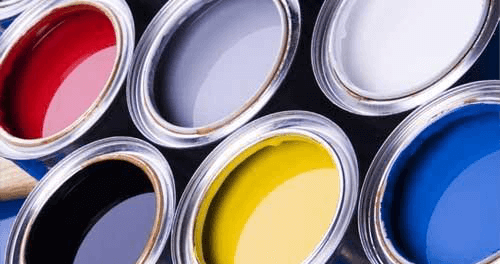
Types of Building colors
Types of Building colors
In this article, we are going to introduce you to a variety of building colors:
Most of us are looking for a beautiful environment around ourselves, which is an important part of this beauty through colors. Studies show that each color in its particles has unique properties that affect human psyche altogether. Colors in different environments have different effects. For example, the proper use of colors for the facade of the building enhances the city’s efficacy, improves the efficiency of work in the workplace, creates a charm for children, and so on. From ancient times, humans use building colors for their beauty, protection, diversity and diversity, as well as the value of buildings.
The widely used building colors are divided into three categories:
Oily colors
Plastic colors
Acrylic paints
Oily colors
These colors are also traditional and old colors which are still the best option for painting doors and windows. Even when other colors are used for the beauty of metal doors, oil paints are used as insulating and scrubbing primers. These colors come in three categories of opaque, semi-opaque and glossy.
Plastic colors
“latex” paints that typically combine water and plastics have increased dramatically in popularity, particularly with do-it-yourselfers. The term latex originally referred to the use of latex from rubber trees for the solid part of the paint that actually creates the paint film. Today various plastics are used such as polyvinyls, polyurethanes, polyesters and acrylics. (“Acrylic latex paint” is sometimes mistakenly used to refer to any water-based paints that use plastics.)
Advantages of plastic paint
They mix with water and do not need any oil solvents.
Classy plastic paints can be washed.
The speed of painting and finishing work on these colors is high.
They don’t smell like oil paints.
These colors dry out early.
These colors are opaque, eliminating much of the defects in walls and ceilings.
Disadvantages of plastic paint
Water is not evasive because it absorbs water.
It becomes pusy early and cannot be washed.
Can not be used on iron such as door, window and railing.
Acrylic paints
The third group of colored paints is acrylic, the new generation of water-soluble paints. These colors are based on acrylic resins and are specially classified for use in the interior and exterior.
Like oil paints, acrylic paints can be completely rinsed and provide a durable and durable coating. The advantages of acrylic paint, the lack of these colors are harmful chemicals and water solubility. In such a way as to color the places where sanitation is important, such as dining halls, kindergartens, hospitals … The use of acrylic paint for the interior is the best option.
Acrylic colors are also stable against various factors such as sun radiation, rain and dust, and because it is easier to use than oily colors, it is recommended for use on external surfaces.
For coloring of surfaces with acrylic paint, rollers, brush and pistol can be used.
Optical reflection is matte, semi gloss and glossy.
As mentioned, the solvent is acrylic water is water and is environmentally friendly.
Nowadays, in developed countries, widespread use is made for the benefits of having no harmful chemicals, washing ability, easy handling, creating a resistant layer, a high drying time and no unpleasant odor of acrylic paint in indoor and outdoor spaces.


Leave a Reply